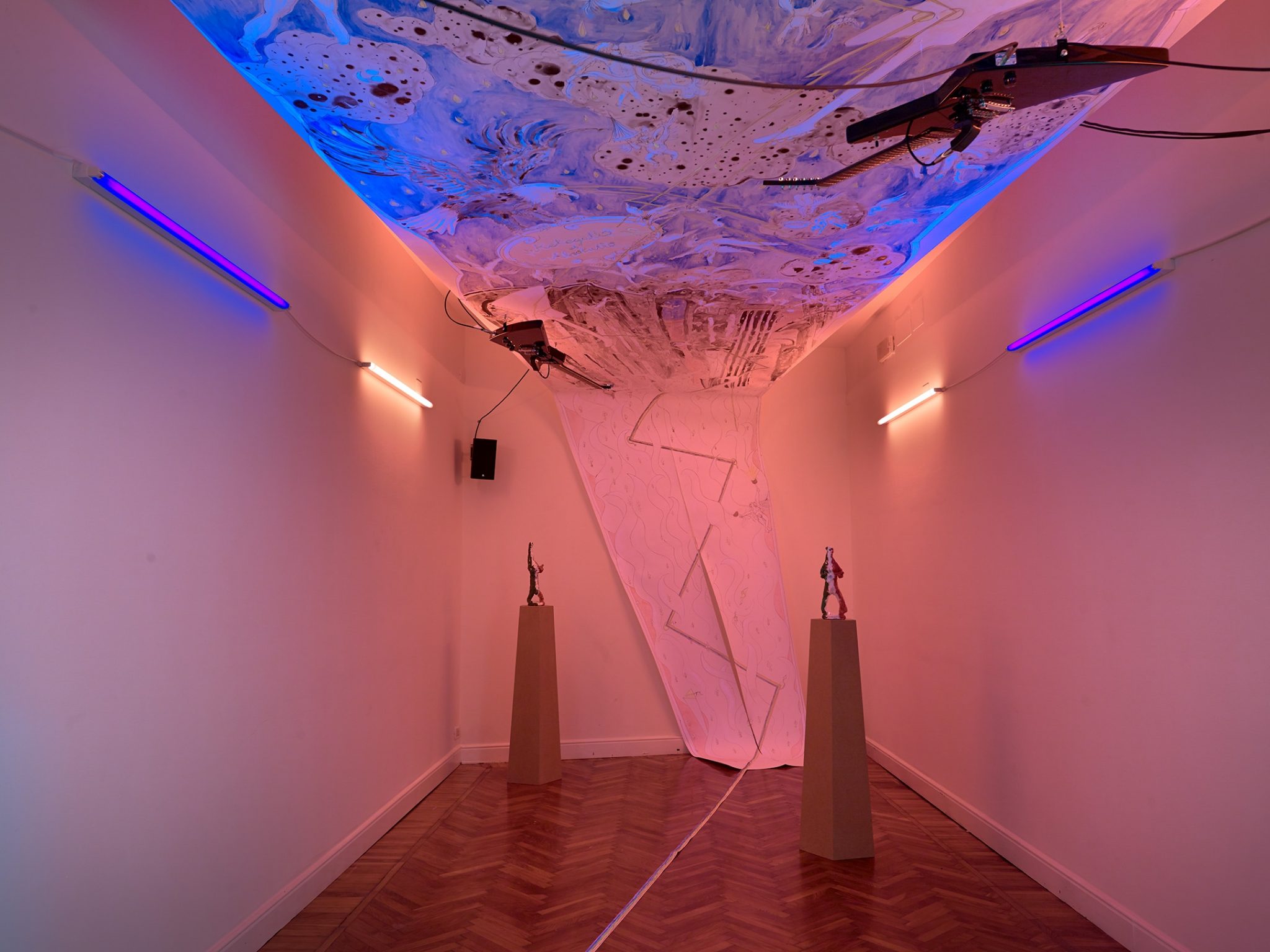ArtReview sent a questionnaire to a selection of the artists exhibiting in various national pavilions of the Venice Biennale, the responses to which are being published daily in May, in the run up to the Biennale opening. Catherine Lorent is representing Luxembourg. The Luxembourg pavilion is at the Ca’ del Duca, Corte del Duca Sforza, San Marco 3052.
What can you tell us about your plans for Venice?
Actually the plans are already set: Relegation is a sound installation with 13 electric guitars, three grand pianos and ‘stage designs’. It consists of three elements – visual, sound and performance. It’s a work with an expanded baroque concept of art that exposes the contradictions of western thought. Visual art: Painting/drawing/sculpture, sound and performance are experienced in a multidisciplinary way, similar to my music project Gran Horno which is experienced in a multi-instrumental way. You will see a sensual Gesamtkunstwerk that relegates the audience in a big Wunderkammer featuring participatory components. The exhibition takes place mostly on the ceiling, like a baroque baldachin. In each of the five rooms is a monumental drawing surrounded with guitars or a grand piano.
The Gibson Explorer guitars and grand-pianos are ‘prepared, conditioned with ‘E-bow’, electro magnetical fields that are triggered by an interface that has been created in collaboration with Luxemburg sound engineer Christian Neyens, who is based in Berlin . During the opening days performances will take place. Accordeonist Natasa Gehl and artist Martin Eder have been invited to perform with me.
Are you approaching the show in a different way to how you would with a ‘normal’ exhibition?
There are no normal exhibitions. To call an exhibition ‘normal’ gives it an appearance of being of less worth. Every exhibition is unique, there are only different budgets, scopes, collaborations, receptions. I am very glad that I was given this unique possibility. I am able to work with a high concentration and with a wonderful constellation of people from different areas, such as Mudam, Luxembourg, Gibson Guitar and the crew of Relegation in Berlin, where I live, and in Luxembourg. Now I can’t wait to see the reception of Relegation
What does it mean to ‘represent’ your country? Do you find it an honour or problematic?
I would say that the country represents the artist. Luxembourg invited the artists by a call to propose projects. I did it this way. It is great to be selected to participate at such an important event as the Venice Biennale. Mudam (Musée d’art Contemporain au Luxembourg) is representing the Ministry of Culture and takes care of the organisation and the budget. With additional sponsors such as Gibson Guitars and Oeuvre Grande-Duchesse Charlotte we work together and there are no concessions in order to follow a certain representation of Luxembourg.
What audience are you addressing with the work? The masses of artist peers, gallerists, curators and critics concentrated around the opening or the general public who come through over the following months?
I am addressing everyone who enters the pavilion
What are your earliest or best memories of the biennale?
My first time in Venice was during an excursion with the Staatliche Akademie der Bildenden Künste Karlsruhe in autumn 2001. I was impressed by the Biennale of Harald Szeemann on a platform of thought. The atmosphere was dense, but also in the city. In a music shop I bought some strange little percussion instruments that I still use today.
You’ll no doubt be very busy, but what else are you looking forward to seeing?
As I will stay some days after the opening, I am generally looking forward to immersing myself in Venice, the biennale, the city and its mysteries.
